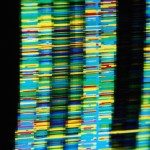Link to Pubmed [PMID] – 20465590
Mol. Ecol. 2010 Jun;19(12):2516-30
A Two endemic groundwater arthropod crustacean species, Crangonyx islandicus and Crymostygius thingvallensis, were recently discovered on the mid-Atlantic volcanic island of Iceland. The extent of morphological differences from closest relatives, endemism, along with the geographic isolation of Iceland and its complete coverage by glaciers 21,000 years ago, suggests that these two species have survived glaciation periods in sub-glacial refugia. Here we provide strong support for this hypothesis by an analysis of mitochondrial genetic variation within Crangonyx islandicus. Our results show that the species is divided into several distinct monophyletic groups that are found along the volcanic zone in Iceland, which have been separated by 0.5 to around 5 million years. The genetic divergence between groups reflects geographic distances between sampling sites, indicating that divergence occurred after the colonization of Iceland. The genetic patterns, as well as the dependency of genetic variation on distances from the tectonic plate boundary and altitude, points to recent expansion from several refugia within Iceland. This presents the first genetic evidence of multicellular organisms as complex as crustacean amphipods which have survived glaciations beneath an ice sheet. This survival may be explained by geothermal heat linked to volcanic activities, which may have maintained favourable habitats in fissures along the tectonic plate boundary in Iceland during glaciations.


